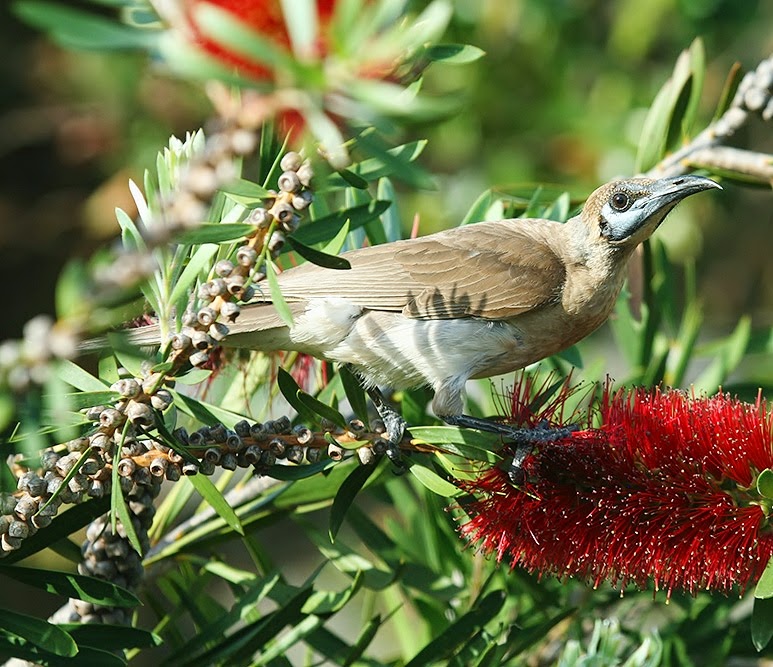 |
| Photo by Jeremy Ringma (Flickr) |
Common name:
little friarbird (en); frade-de-garganta-amarela (pt); polochion à menton jaune (fr); filemón goligualdo (es); glattstirn-lederkopf (de)
Taxonomy:
Order Passeriformes
Family Meliphagidae
Range:
This species is found in eastern and northern Australia, as well as in southern New Guinea.
Size:
These birds are 25-29 cm long and weigh 48-84 g.
Habitat:
The little friarbird is mostly found in dry savannas and dry tropical forests dominated by Eucalyptus, but also uses moist tropical forests, mangroves, dry scrublands, and even urban areas. They tend to favour areas near water and occur from sea level up to an altitude of 900 m.
Diet:
They mostly forage alone, in pairs or small flocks, but can join mixed groups with other honeyeaters. These birds feed mainly on nectar and invertebrates such as insects and spiders, but also take flowers, fruits and seeds.
Breeding:
Little friarbirds are monogamous and breed in August-April. They nest in a large, deep open cup made of grasses and lined with finer grasses and other soft materials. The nest is almost always placed in a tree overhanging water. The female lays 2-4 eggs which she incubates alone for 13 days. The chicks are fed by both parents and fledge 14 days after hatching. Each pair raises 1-2 broods per season.
Conservation:
IUCN status – LC (Least Concern)
This species has a very large breeding range and is described as perhaps common. The population is suspected to be stable in the absence of evidence for any declines or substantial threats.







